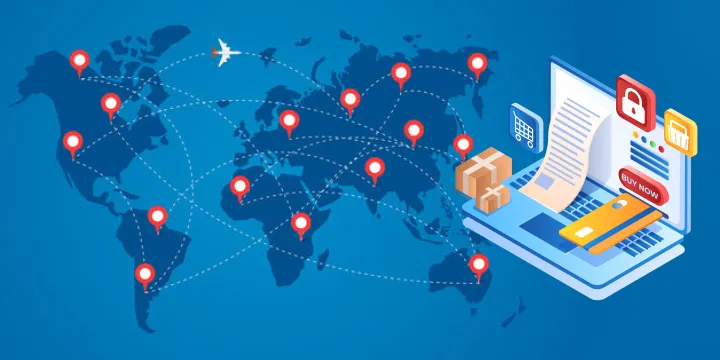In the era of globalization, cross – border e – commerce platforms have become a crucial channel for businesses to expand their global footprint. However, navigating these platforms requires a clear understanding of various aspects.

I. Selecting the Right Cross – Border E – commerce Platform
- Market Reach and Target Audience
- Different platforms have distinct market focuses. For example, Amazon has a strong presence in North America and Europe, while Shopee is popular in Southeast Asia. Analyze your target market’s geographical location, consumer preferences, and purchasing power. If your products are trendy fashion items appealing to young consumers, platforms like SHEIN’s own platform or some local fashion – focused e – commerce platforms in emerging markets might be a good fit.
- Platform Policies and Fees
- Each platform has its own set of policies regarding product listing, selling limits, and return policies. Also, pay attention to the fees, including listing fees, transaction fees, and advertising fees. eBay, for instance, has a relatively flexible listing system but may charge different fees based on the type of listing. Compare these policies and fees across platforms to find the most cost – effective and business – friendly option.
II. Effective Operation Strategies on Cross – Border E – commerce Platforms
- Product Listing Optimization
- Create detailed and appealing product listings. Use high – quality product images from multiple angles, and write clear and accurate product descriptions. Include relevant keywords in the title and description to improve searchability. For example, if you’re selling a smartwatch, mention features like “waterproof,” “long – battery life,” and “fitness tracking” in the listing to match what customers are likely to search for.
- Offer competitive pricing. Research the prices of similar products on the platform and set your prices strategically. You can also consider offering bundle deals or limited – time discounts to attract customers.

- Customer Service Excellence
- Provide prompt responses to customer inquiries. Most platforms have a messaging system, and customers expect quick answers. Whether it’s a question about product features or shipping details, a timely response can enhance customer satisfaction.
- Ensure smooth after – sales service. Have a clear return and refund policy, and handle returns efficiently. Positive after – sales experiences can lead to repeat customers and good reviews, which are crucial for building a good reputation on the platform.
III. Risk Management on Cross – Border E – commerce Platforms
- Intellectual Property Risks
- Be aware of intellectual property rights. Avoid selling counterfeit or pirated products. Research and obtain necessary licenses if your products involve patented technologies or copyrighted designs. Some platforms are strict about intellectual property protection and will take down listings and impose penalties for violations.
- Logistics and Supply Chain Risks
- Choose reliable logistics partners. Delays in shipping can lead to customer dissatisfaction. Consider factors like shipping speed, tracking capabilities, and delivery reliability. For long – distance shipping, services like DHL or FedEx may offer better tracking and faster delivery times.
- Manage inventory effectively. Keep track of stock levels to avoid overselling or stockouts. Use inventory management tools provided by the platform or third – party software to optimize inventory levels based on historical sales data and market trends.

In conclusion, success on cross – border e – commerce platforms requires careful platform selection, effective operation strategies, and proper risk management. By understanding these aspects and taking proactive measures, businesses can thrive in the global e – commerce market. As the cross – border e – commerce landscape continues to evolve, staying updated and adaptable is the key to long – term success.




